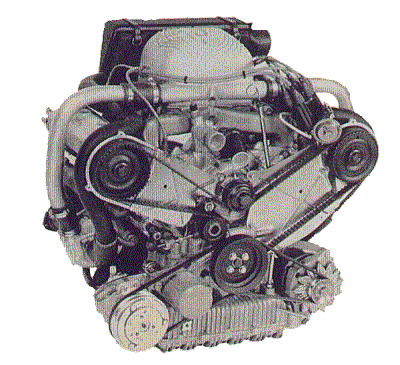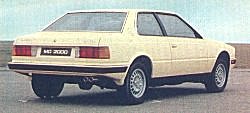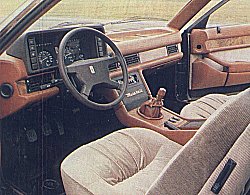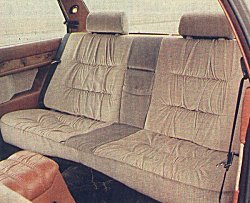"It's amazing!", said a salesman from one Maserati dealership
in Milan; "I've sold cars for more than thirty years and I can't remember another car being
received with such enthusiasm. It's fantastic!" The same story could be heard from other
dealerships all over Italy with customers placing orders for the car without seeing it, orders
based solely on the various photos and articles that appeared in newspapers and magazines.
Delivery dates at the time were uncertain with dealers refusing to be committed, quoting
anything from two to six months. Some were accepting deposits of L.3.000.000,
around 10% of the estimated asking price, which had yet to be confirmed.
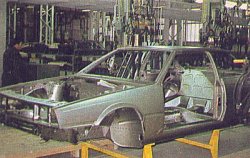
How did the manufacturer react to this enthusiasm?
De Tomaso promised the first cars for March 82.
At Innocenti of Milan an assembly line with a workforce of 200 was built specifically for the
'Biturbo' at a cost of around L.50,000,000,000. At first production was slow and in December 1981
the first cars to be completed were only just coming off the production line.
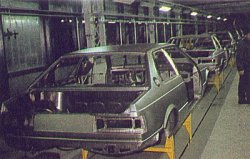
By mid January very few cars had been completed, but the two factories, Innocenti of Milan and
Maserati of Modena, were working hard to meet the anticipated initial demand. Production plans
were those typical of a low volume series. Innocente made the bodyshells, floorpans and assembled the dashboards, gearboxes,
the interior (at the time made in Turin), the paint work and the mechanical assembly.

Maserati of Modena, made the engines and suspension units, then sent them to Lambrate near
Milan for mounting onto the bodyshells. At Modena a special production line employing around 150
workers was built with modern assembly methods to control numbers. According to official sources
the factory was to produce around 30 cars a day (7000 a year) by February 1982, but at the time
these figures were thought to be far too optimistic. However, these were deemed to be
attainable by the factory as the supply of components could be adjusted according to demand.
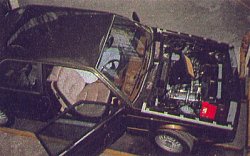
These production methods were necessary as the plant had the capacity to double production to 60 cars a day. Now there
remained only the 'usual problems' that arise at the start of production, especially for a car
like the 'Biturbo', which was so innovative in many respects.
For some time De Tomaso thought in terms of a small, equally prestigious Maserati. In 1980 this
project started to take shape and several prototypes were made under the supervision of the
technicians at the small De Tomaso Research Centre at Modena.
Initially there were thoughts of a normally aspirated straight-six engine; then it was
decided to incorporate the performance innovation of the day, 'the turbocharger'. There then
followed many variations all based on the concept of a 'V6'. For the development and production
of the first prototypes, De Tomaso turned to the many contacts, mainly from Turin, that he had made in
the twenty years he had been working in Italy.

Staying with specialised companies, small
but able and flexible, and taking note of the prospective competition, soon arrived at the idea
of the 'Biturbo'. They chose well established solutions in respect of the chassis, suspension and
gearbox. For the engine, however, he looked towards originality and high performance.
The initial appeal of the car was down to its sleek body shape. It was a compact sports saloon.
At first sight it looked like the work of Giugiaro, with its front reminiscent of the 'Quattroporte
and the progressive wedge-shaped bodywork typical of the stylist from Turin. Actually the 'Biturbo'
was designed at De Tomaso, keeping to many concepts of a famous car designer from Turin.
The Biturbo was finally unveiled to the press on the 14th December 1981, the date of the 67th
anniversary of the founding of:
SOCIETA ANONIMA OFFICINE ALFIERI MASERATI
The car turned out to be all that was expected at the time. It was pleasing to the eye, fast with excellent
road holding capabilities and was beautifully finished. Over the years it has evolved from a
'Curate's Egg' into the excellent Biturbo Maseratis of today!
Nobody can doubt that these cars are worthy of the name of MASERATI.
|

|
|
To enter Enrico's Maserati Pages CLICK HERE!
Copyright: Enrico's Maserati Pages - © 2000-2005. All rights reserved. |
|
